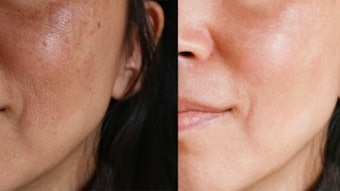According to a survey conducted by research firm Data Popular, Brazilians’ spending on beauty products reached R$43.4 billion in 2010. The figures are almost four times higher than the ones recorded in the last survey, conducted in 2002. Participation of the lower middle class (households with annual incomes of between R$11,500–17,000) in the domestic market grew from 26.6% to 45.6% (valued at R$19.8 billion).
In 2010, the upper class and upper middle class spent R$15.9 billion, and the working class and lower class spent R$7.7 billion. While the consumption of the lower middle class has multiplied by eight since 2002, consumption by the wealthier classes multiplied by a factor of three, showing the rise of a new beauty consumer profile.
“The market witnessed a significant change in the past two years, when the lower middle class consolidated its leadership in the consumption of cosmetics”, said Renato Meirelles, managing partner at Data Popular.
The survey also revealed that for every R$100 spent on toiletries and beauty products, approximately R$18.50 is related to hair care and R$17.30 to body care.
Besides the increase in their purchasing power, higher spending by the lower middle class is also due to greater frequency of purchases. Studies by Kantar Worldpanel show that hair masks and treatments have only been added to the lower middle class’ shopping carts a few years ago.
The large number of new products launched in the Brazilian market is another factor to be considered in the country’s shifting consumer patterns. According to the Brazilian Association of the Cosmetic, Toiletry & Fragrance Industry (ABIHPEC), an average of 20 new items hit the market daily.
Gisele Bündchen Launches Cosmetic Line
Tired of playing a supporting role in the beauty market, supermodel Gisele Bündchen decided to launch her own skin care brand—Sejaa. The products are claimed to be formulated with a high concentration of natural ingredients and aromatherapy fragrances, and utilize recyclable packaging.
All three products in the line are manufactured in a plant in Phoenix, AZ, and sold only through the brand’s website in the U.S. and Canada. Imported to Brazil by Classy Brands, they are available at Droga Raia—a pharmacy chain of 362 stores—and Sacks, the largest online retailer of fragrances and cosmetics in Brazil and now owned by LVMH [additional information on this transaction can be found in the November 2010 Inside Brazil column].
Sejaa is expected to sell approximately 300,000 units and reach revenues of R$30 million in its first year of operations. O Boticário Makes Direct Sales Debut with Eudora Brand After a decade of tests and research, O Boticário will launch the Eudora brand to compete with giants such as Avon and Natura in the direct sales market. According to company president Artur Grynbaum, the development of a new line for direct sale resulted from a combination of two factors: the maturity of O Boticário’s franchise system, which limits the possibility of opening new stores; and Brazil’s positive economic scenario. “There is an opportunity in the consumer goods sector, and we decided not to [align this new brand] venture with [the O Boticário brand strategy], which will keep following its path,” said Grynbaum.
He reported that products in the Eudora brand will be manufactured at the company’s current plant in the state of Paraná, and the new demand will be accommodated due to an expansion of its production capacity, which required investments of R$170 million between 2009 and 2012. By opting to create a new brand, the company expands its opportunities in the market while avoiding competing with its more than 3,000 franchisees.
New Regulation Hampers Sales of Organic Cosmetics
A new law promulgated by the Brazilian government states that all products—including cosmetics—may only be sold with organic marketing claims if they feature a government seal. The law was effective January 1, 2011.
But due to lack of understanding of what exactly is an organic cosmetic, the seal is yet to be launched. Without it, however, companies would be prohibited to market its products in Brazil if the word “organic” appears on the label.
“Those most harmed by this decision are Brazilian consumers, because their access to organic products is now compromised,” said Clelia Angelon, president-founder at Surya Brasil, which has its products certified by Ecocert. The entrepreneur does not rule out the possibility of transferring Surya’s manufacturing to another country in order to keep supplying international clients.
According to Angelon, about 20% to 30% of Surya Brasil’s products are exported, and the priority now is to maintain market share in those regions.
L’Occitane Brasil Seeks to Quintuple Sales by 2013
Aiming to achieve revenues of R$500 million over the next three years, L’Occitane Brasil invested in creating a new executive committee that plans to open 100 new outlets by 2013.
With expectations that Brazil will exceed Japan in cosmetic sales in 2011, L’Occitane forecasts an increase of 400% over the next three years. In addition to opening new stores, the company plans to invest in midsize cities, expand its e-commerce strategy and start distributing its products in 500 new luxury pharmacies.
“Our aim is for Brazil to become a large distribution center for South America,” said Anna Chaia, executive director, L’Occitane Brasil. In December 2010, the store located at Iguatemi Shopping Mall in São Paulo, registered the highest turnover among the 1,500 points of sale of the brand worldwide. Brazil currently represents L’Occitane’s fifth largest revenue.
Bombril Enters Beauty Market
Famous for its top-selling wire wool since 1948, Bombril is now investing in different lines of consumer goods and promises to enter the beauty market in 2011.
“We will enter the market with two hair care and body care brands, and their launch will be initially concentrated in the states of São Paulo and Rio,” said Marcos Scaldelai, marketing and R&D director, Bombril.
Fernanda Bonifacio is a Brazilian journalist who focuses on the beauty industry, and has been published in the U.S. and Europe. During 2002–2008, she represented ABIHPEC and its member companies globally.










